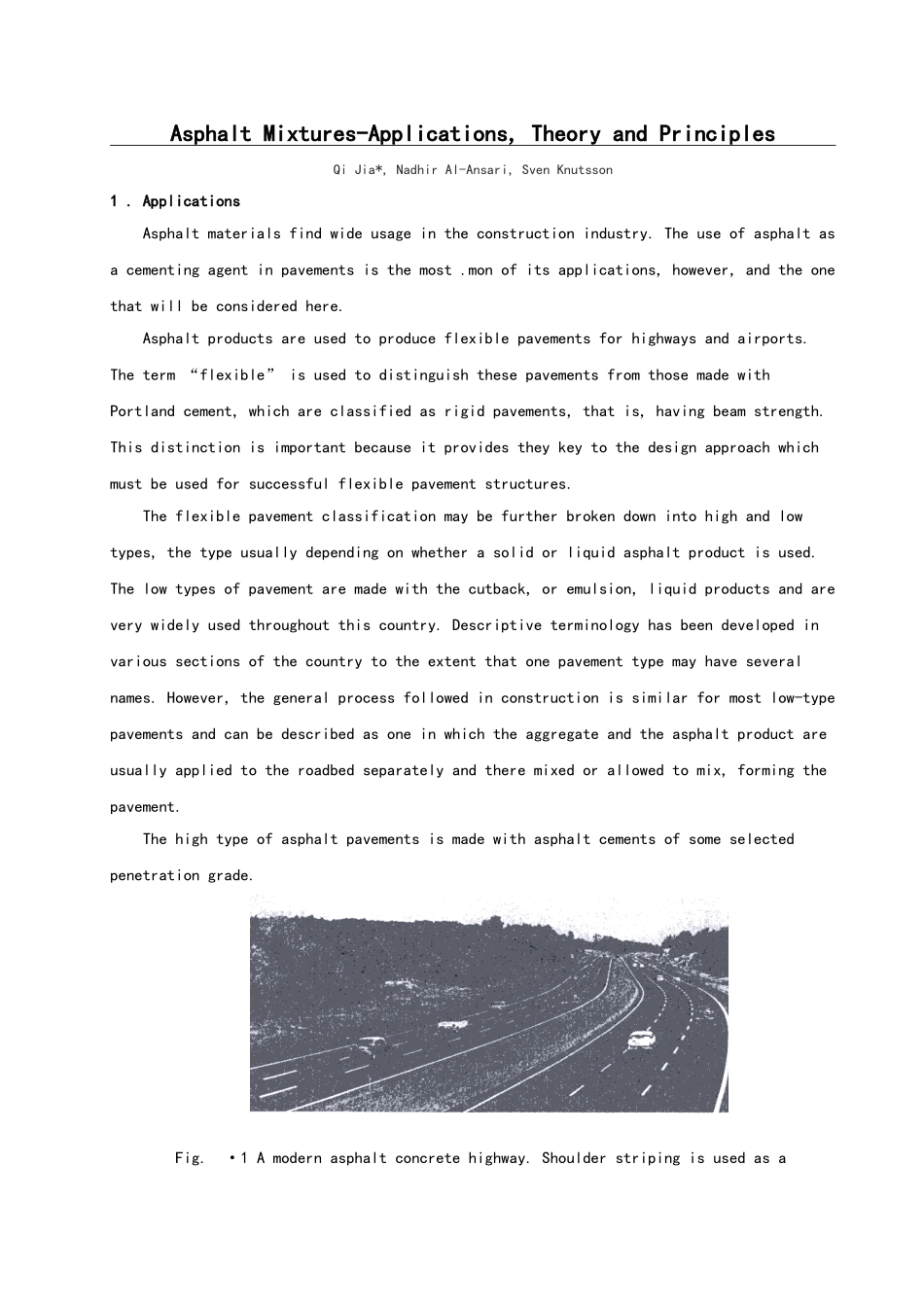外文翻译与文献综述学 系: 土木工程系 目录第一章 外文原文..............................................1第二章 外文翻译..............................................8第三章 文献综述.............................................14Asphalt Mixtures-Applications, Theory and PrinciplesQi Jia*, Nadhir Al-Ansari, Sven Knutsson 1 . ApplicationsAsphalt materials find wide usage in the construction industry. The use of asphalt as a cementing agent in pavements is the most .mon of its applications, however, and the one that will be considered here.Asphalt products are used to produce flexible pavements for highways and airports. The term “flexible” is used to distinguish these pavements from those made with Portland cement, which are classified as rigid pavements, that is, having beam strength. This distinction is important because it provides they key to the design approach which must be used for successful flexible pavement structures.The flexible pavement classification may be further broken down into high and low types, the type usually depending on whether a solid or liquid asphalt product is used. The low types of pavement are made with the cutback, or emulsion, liquid products and are very widely used throughout this country. Descriptive terminology has been developed in various sections of the country to the extent that one pavement type may have several names. However, the general process followed in construction is similar for most low-type pavements and can be described as one in which the aggregate and the asphalt product are usually applied to the roadbed separately and there mixed or allowed to mix, forming the pavement.The high type of asphalt pavements is made with asphalt cements of some selected penetration grade. Fig....


